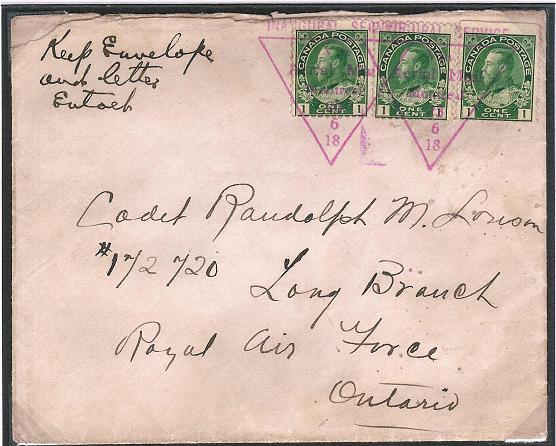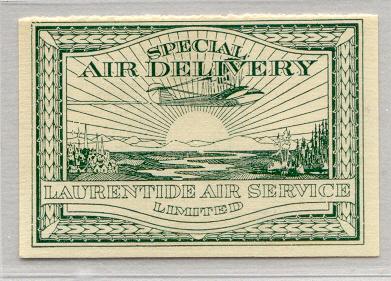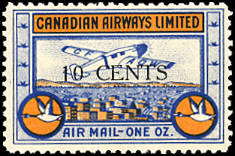A brief history of Canadian Air Mail Flights

The first air mail flight in Canada was from Montreal to Toronto on June 24th 1918. It was made by Captain Brian Peck from the Royal Air Force training school at Leaside, outside Toronto, and was planned as part of a publicity event to encourage wartime recruitment.
Approximately 125 covers were carried, and given a special cancellation as shown above. This was followed by some 20 more mail carrying flights over the next five years, made by a variety of individuals and organizations. The amount of mail carried on each of these flights was small,
and while most Canadian air mail covers are relatively affordable, these pioneer covers tend to be rare and expensive.
During the 1920's, a number of companies began flying into remote Northern areas, often in support of prospectors and miners. The Post Office allowed these companies to charge for letters they carried, and to issue their own stamps. These stamps had a "semi-official" status, as they were sold from post offices, but the Post Office did not assume responsibility for the airmail, or help with the cost of service!


